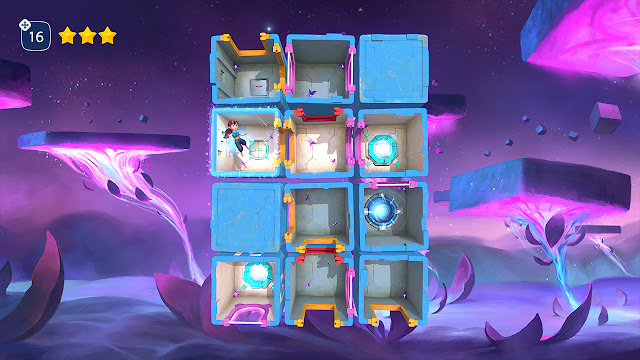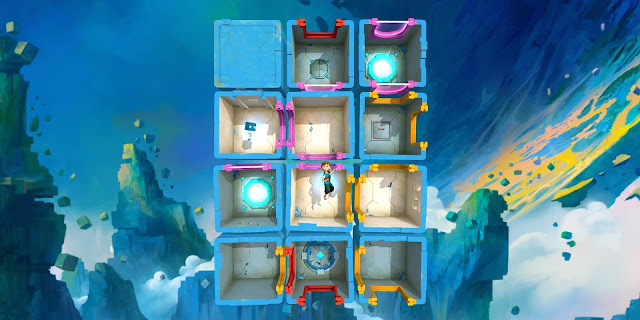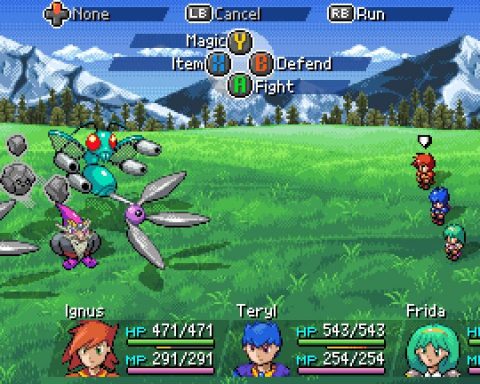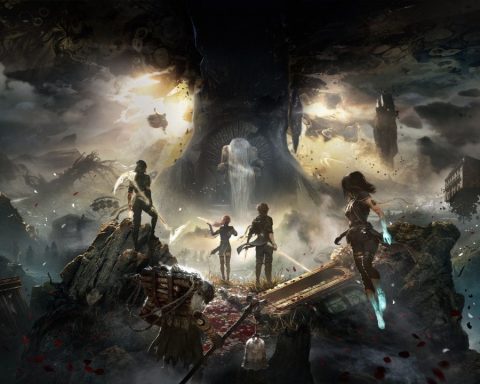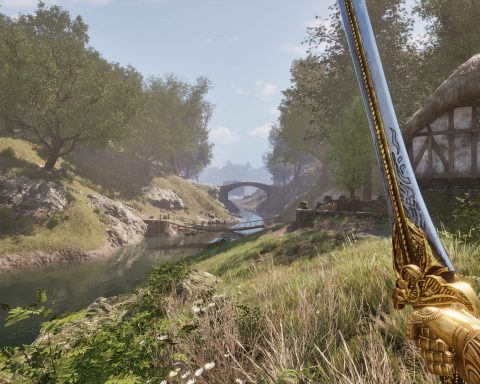Review by Harvard L.
I think it must just be something about the latter half of this decade – we’re experiencing a revival of well-designed puzzle games. Whereas in the early 2000’s, puzzle games found it difficult to maintain its market share due to increasing budget sizes and a move to more cinematic fare, the modern indie scene has led a charge of developers interested in making games out of tight core mechanics and interactions to satisfy the innate human desire to solve problems.
Modern puzzle games can live or die based on their foundational mechanic, whether it is drawing lines in The Witness, connecting disparate points in Portal or manipulating spaces in Mallow Drops. The latest game from Swedish developer, Isbit Games, Warp Shift, demonstrates the strength of this design philosophy to a T, building an escalating series of challenges upon an elegantly intuitive ruleset.
Warp Shift’s key premise is the manipulation of space: you need to get your character from one point to another, and you’ll do so by moving rooms around to make the most efficient path from A to B. Rooms have doors of various qualities, and your character can only travel between rooms that have connecting doors. In each level, you’ll move from your starting location to pick up a key, and then reach the exit. So far, so simple.
The game’s narrative is fairly spartan, tasking the player with climbing a tower while being guided by an anthropomorphic glowing block that rotates like a Rubik’s Cube. There are no wordy story sequences or cutscenes to distract the player from the puzzles, although there are some excellent art assets which appear here and there to denote a new set of levels.
The companion cube is also a great hint towards the game’s style. It feels like it belongs to the same family of sliding block puzzles like Rush Hour, testing the player’s ability to think spatially and understand the implications that moving one piece will have upon everything else. Later levels introduce ideas like teleporters and locked doors, but none of the additions feel gimmicky and the developers manage to squeeze out a lot of novel interactions with just a handful of core mechanics.
One of the problems with the puzzle genre that Warp Shift elegantly sidesteps is the awful feeling of being stumped when you can’t figure out the answer to a challenge. Most developers create a puzzle with a single solution in mind and proceed to pepper their level with red herrings and unconventional logic so that finding the right way becomes an unexpected and joyous act. Warp Shift is no different; each level has a clearly defined “proper solution”, but the difference is that every level has multiple valid answers: as long as you get your character to the portal the game will consider the level “solved”.
Rather than testing players on their deduction, Warp Shift’s measure of skill is efficiency. Players can earn stars for reaching the portal in the smallest number of moves – whether moving the rooms or your character – and the developers always stay one step ahead of the player when allocating level rewards. Levels are unlocked sequentially by beating the previous one, but they’re also divided into sets which unlock once you’ve earned enough stars across all levels. Successfully earning three stars in any challenge will require you to be extremely efficient with their every move, but the difficulty never becomes prohibitive as you can move to the next level whenever you like.
The level design is also adeptly tuned to create a sense of accomplishment regardless of whether a player finishes a level with one or three stars. Because of the Rubik’s Cube style movement of the sliding rooms, high level players will be looking for moves that “prep” the puzzle for a quick solution. Some levels are even set up with a red herring solution which the player will need to tear apart in order to earn those elusive stars. I spent many a level stumped at two stars wondering how I could possibly do it faster, and most times the answer needed me to look at the rooms and available tools in a completely different way. The puzzles do offer a skip feature if you restart too many times, and while I would have liked the option to rewind move-by-move or at least show a log of the moves you made, each level is over in less than 30 seconds and even the toughest puzzles can be solved in around fifteen moves.
The only complaint that I could possibly level at the game is that it does weigh in on the short side. Although the levels have a lot of replay value, veterans of the puzzle genre might find the first few worlds too easy. Despite this though, I can’t think of any way to meaningfully add to this game without feeling like a contrivance – Warp Shift’s laconic design is its most compelling feature, and even though I’m normally indifferent towards puzzles games, this one had me entranced for a solid afternoon.
Warp Shift is a puzzle game that is joyful in its accessibility and expansive in its complexity. It’s a whimsical experience for players who might only be able to muster one star on its levels, but also provides the depth needed for hardcore fans. It’s never too cognitively demanding and doesn’t insult your intelligence by being too easy or too hard, but instead offers a dynamic challenge which maximises the feeling of discovery and ingenuity that puzzle solvers crave. I hope that the satisfaction I feel from acing the game’s most difficult levels is the same satisfaction that the team at Isbit Games feels knowing that they have made a puzzle game that’s both quietly contemplative and excitingly intricate.
– Harvard L.
Contributor


